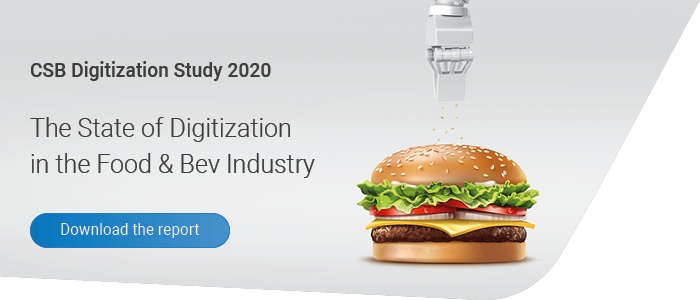At the "Summit for Logistics 2016" experts developed a prognosis for 2017. One of their theories: Digitalization and how IT will play an ever-increasing role as a success and competitive factor. This article shows how IT can help reduce that largest cost item in logistics - transport costs.
In practice, many companies still plan their routes using conventional methods, i.e. without the support of IT. New customers scheduled for delivery are integrated in route planning or frame routes are formed to which the orders are assigned daily. This is neither efficient, nor does it increase customer satisfaction.
It is ultimately much more effective to schedule, manage and monitor routes with the aid of software. Up to 15 percent fewer costs in freight management are not uncommon in this respect. And the technical obstacles for food producers and retailers are not that high: Modern route planning and optimization systems make it possible to optimize scheduling, routes, capacities, load weight and volumes, vehicle and personnel deployment as well as reusable packaging management. The savings potential is enormous: Depending on fleet park and delivery structure, even entire vehicles can be saved.
Good planning and optimization of routes is key
A production facility of EDEKA, has equipped its 80 vehicles with a new route optimization solution -and saves time and costs as a result. “The logistics for delivering
fresh products to our customers every day is rather complex. In order to optimize deliveries while keeping the prices for the consumers at a minimum, we are using an integrated solution by CSB-System. With the latest upgrade, we incorporated enterprise resource planning, material flows and logistics even more closely,” says Manfred Sebastian, head of business administration.
A look at the figures: On average, Rasting’s 80 drivers deliver to about 800 customers,
partly driving on freeways, but often also on country and municipal roads, and distribute up to 4,800 roller containers or 15,000 E3 crates.
Consequently, it is vital to establish good schedules and to optimize the routes which are transferred to the trucks. This is why complex algorithms take over the calculation of
the optimal tour per truck and per route. The implemented solution takes into account all relevant restrictions, such as time frames for delivering to the different customers, utilization of the vehicle capacities, vehicle types, availability of vehicles and drivers as well as legal provisions regarding driving times. Additionally, route optimization must consider reusables as well as collection and procurement orders.
Efficient reusable management
The optimized routes for the day are then automatically transmitted to mobile data entry devices which connect to the electronic systems on board of the truck and to the
navigation systems. The data entry devices also document the entire delivery, including unplanned stops and the relevant stopping reasons. Reusables management can also be optimized with the use of MDC devices: In the past, this involved a lot of
paper. Today, reusables are entered much faster and without the use of paper. Throughout the route, a permanent online communication link is established to the host system in Meckenheim, so the control station can monitor any time the current position of the vehicle, the reusable hand-overs and the temperature in the truck’s cargo compartment.
Lower costs, higher transparency
Manfred Sebastian is very satisfied with the new route optimization solution: “There are no unnecessary detours anymore and in the past months, we could substantially reduce
the motorway tolls due.”
The head of business administration emphasize the considerable gains in transparency. With the control functionalities integrated in the solution, he can track and control much better the drivers’ tours by comparing actual and expected data. In addition to evaluating driving and standing times, Sebastian can also evaluate the times a driver needs for the vehicle (refueling, oil checks, tire checks etc.). If requested, at the end of each route a software-aided analysis provides information on the deviations from the target specifications and the underlying reasons. “The investment in the new solution pays off every day because the quality of our logistical processes for the delivery of our products has increased considerably,” Sebastian says.


